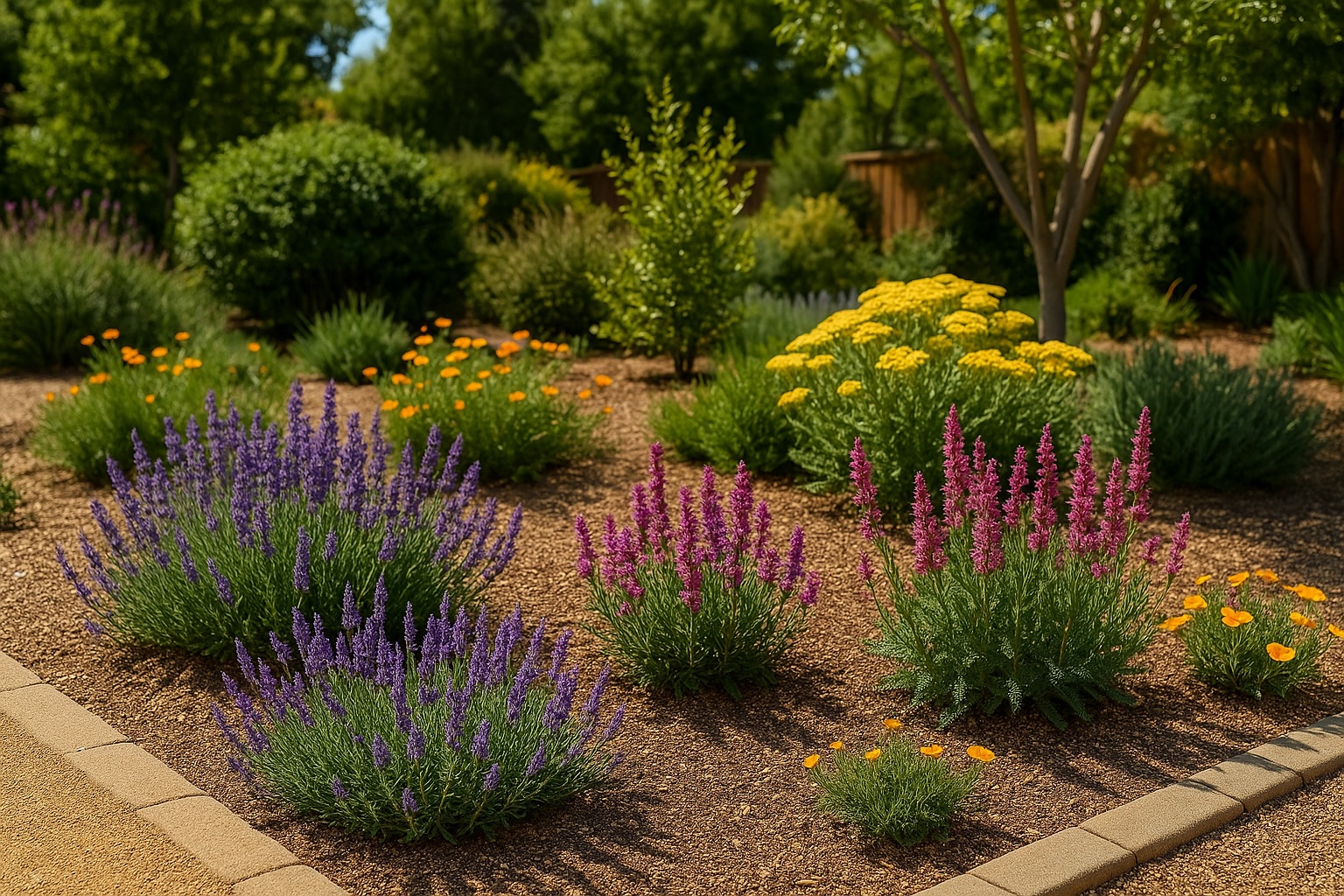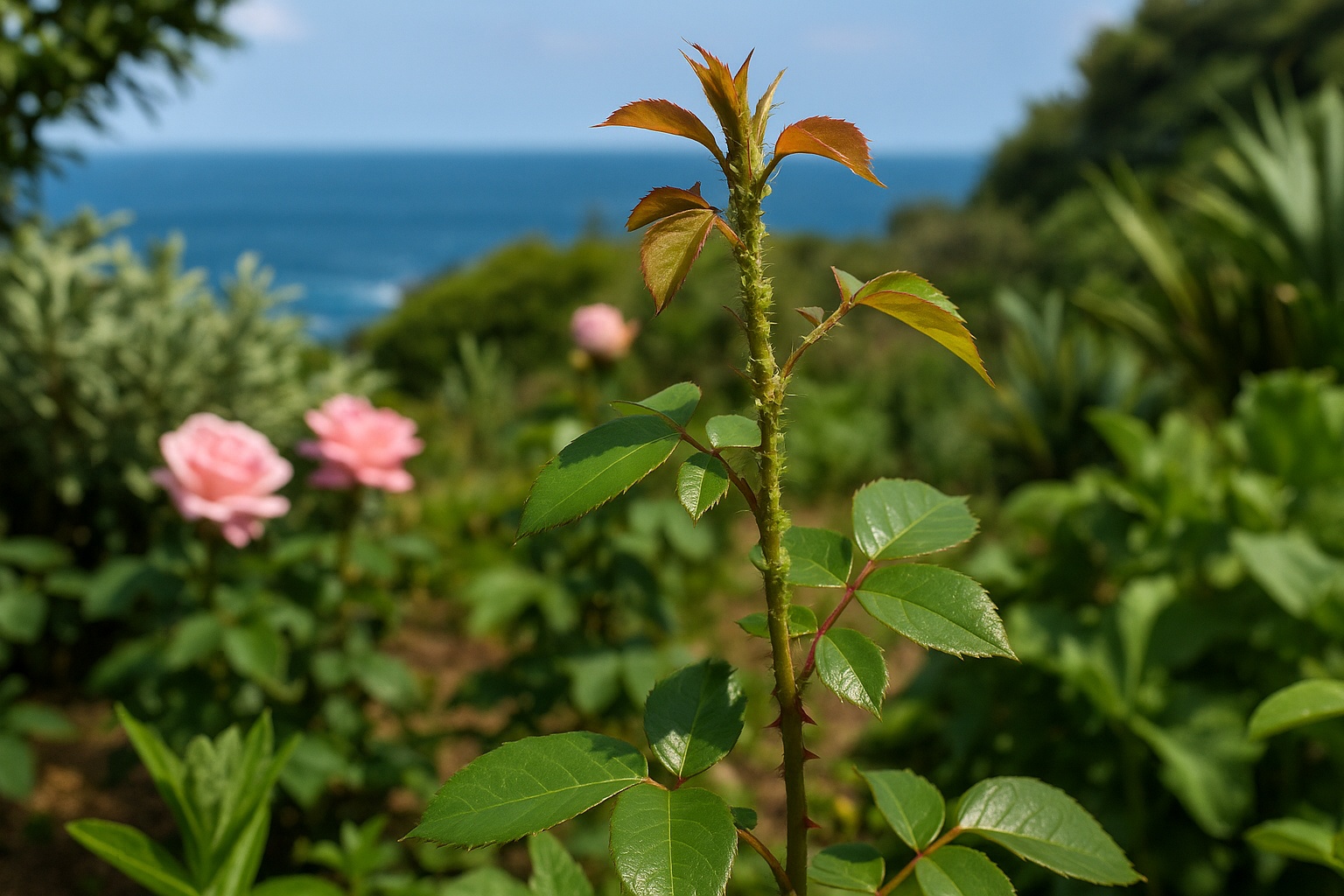San Diego is a paradise for flower lovers, but our sunny climate and periodic droughts mean water-wise gardening is a must. That’s why drought-tolerant perennials are essential for anyone who wants a vibrant, low-maintenance landscape that stays beautiful all year long. These resilient plants don’t just survive on less water—they thrive, providing color, pollinator habitat, and curb appeal even through dry spells.

Whether you’re starting fresh or want to swap thirsty annuals for sustainable color, this guide will introduce you to the best drought-tolerant perennials for San Diego gardens. You’ll also find local planting tips, watering strategies, and how to design a perennial bed that looks great even in the heat of summer.
Why Choose Drought-Tolerant Perennials?
- Water Savings: These plants require much less irrigation than traditional bedding flowers, which helps conserve water and cut utility bills.
- Low Maintenance: Once established, most drought-tolerant perennials need little care beyond occasional pruning and deadheading.
- Year-Round Beauty: Many offer long bloom periods, evergreen foliage, or colorful seed heads for all-season interest.
- Wildlife Benefits: These perennials attract pollinators like bees, butterflies, and hummingbirds while providing habitat for local birds.
- Soil Health: Deep roots help stabilize soil and improve its structure over time.
Top Drought-Tolerant Perennials for San Diego Yards
- Salvia (Sage): Salvia varieties like Cleveland sage, autumn sage, and Mexican bush sage are prized for their blue, purple, or red flower spikes. They bloom for months and are irresistible to hummingbirds and bees.
- Yarrow (Achillea millefolium): This native perennial forms ferny mounds topped with flat clusters of yellow, pink, or white flowers. It thrives in poor, sandy soils and full sun.
- Lavender (Lavandula): Famous for its fragrance and purple blooms, lavender is perfect for low-water gardens. It prefers well-drained soil and full sun, and makes a great border or container plant.
- California Poppy (Eschscholzia californica): Technically a perennial in warm zones, the state flower of California self-seeds and pops up every spring with vibrant orange or yellow blooms.
- Agastache (Hummingbird Mint): Tall flower spikes in pink, purple, or orange attract hummingbirds all summer. Tolerates heat, wind, and dry soils.
- Penstemon (Beardtongue): With its tubular flowers in red, purple, or pink, penstemon is a staple for pollinator gardens and tolerates rocky, dry soils.
- Kangaroo Paw (Anigozanthos): Unique fuzzy flower spikes and grasslike foliage make this Australian import a standout in San Diego’s climate.
- Blanket Flower (Gaillardia): This perennial blooms non-stop with red-and-yellow daisy flowers from spring through fall and takes hot, dry conditions in stride.
- Coreopsis (Tickseed): Bright yellow flowers cover these mounded perennials for weeks, and they’re nearly unbothered by drought or pests.
- Verbena: Both native and non-native varieties produce a carpet of purple or pink flowers and thrive in hot, dry locations.
Tips for Success: Planting & Caring for Drought-Tolerant Perennials
- Choose the Right Spot: Most drought-tolerant perennials need 6+ hours of sun each day. Avoid shady, low-lying areas where water may pool.
- Improve Drainage: Add compost, sand, or gravel to clay soils to ensure excess water drains quickly—these plants hate wet feet.
- Plant in Fall or Early Spring: This gives roots time to get established before summer heat arrives.
- Mulch Matters: Use a 2-3 inch layer of gravel, decomposed granite, or bark mulch to conserve moisture and keep roots cool.
- Water to Establish: Even drought-tolerant perennials need regular watering for their first year. Water deeply once or twice a week, then cut back as roots mature.
- Prune and Deadhead: Trim back spent blooms to encourage more flowers and prevent self-seeding if you want tidy beds.
Design Ideas: Creating a Drought-Tolerant Perennial Bed
- Layer Heights: Place taller varieties like agastache or Mexican sage at the back of borders, with medium yarrow or coreopsis in the middle, and groundcovers like verbena up front.
- Color Themes: Group plants with similar bloom colors (purples, oranges, yellows) for a bold, cohesive look.
- Mix Textures: Combine fine-textured yarrow or lavender with bold leaves from kangaroo paw or salvia for extra interest.
- Add Hardscape: Use boulders, stepping stones, or gravel paths to accentuate the “waterwise” look and provide contrast.
- Attract Pollinators: Plant large drifts or repeated groupings of the same species to draw more bees and butterflies.
Best Practices for Watering in San Diego’s Climate
- Water new perennials deeply—soak the root zone to encourage roots to grow downward.
- Once established (after one year), reduce watering to every 10–14 days during hot, dry spells.
- Water early in the morning to minimize evaporation and discourage mildew.
- Skip watering after rain or during cool, cloudy periods.
Pro Tip: Overwatering is a bigger risk than underwatering for these plants! Watch for yellowing leaves or rot, and let the soil dry between waterings.
Recommended Local Resources
- UC Cooperative Extension – San Diego
- Local nurseries: Walter Andersen Nursery, Armstrong Garden Centers, City Farmers Nursery
Frequently Asked Questions
- How soon will drought-tolerant perennials bloom after planting?
Many will flower the first year, especially if planted in spring or fall, but some (like lavender and yarrow) get showier every year. - Can I mix drought-tolerant perennials with succulents?
Absolutely—just make sure their water and sun needs are compatible. Both love fast drainage and full sun. - What’s the best mulch for these plants?
Gravel or decomposed granite looks natural, conserves water, and prevents rot better than wood chips. - Will they attract pests?
These perennials are generally pest-resistant but can attract beneficial insects like ladybugs, bees, and butterflies.
With the right mix of drought-tolerant perennials, your San Diego yard can be colorful, sustainable, and easy to maintain—all while saving water and supporting local wildlife.



